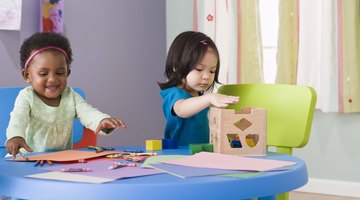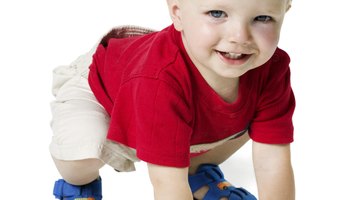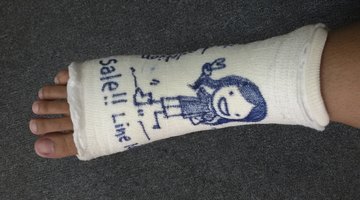How to Help a Child Who Cannot Pronounce the Letter S
The "S" sound can be difficult for a child to master, especially toddlers and some preschoolers. Although this mispronunciation is quite normal for the younger crowd and they usually outgrow it, you can work with your child to help her develop this language skill. If you make the speech exercise entertaining, she will be more likely to cooperate and practice regularly.
Position your body 2 to 3 feet away and facing toward your child. The two of you can sit at the table, on the couch or on the floor, as long as you are facing each other. Take a look at both of your torsos and reposition them, if needed, so they are long and straight. Ensure that she can easily see your eyes and mouth.
Explain to your child that you'll be doing some animal exercises in which you'll say a phrase and an animal sound and she should repeat it. Alternate among random animals such as a dog goes “Arf, arf,” a cat goes “meow” and a cow goes “moo.” In between, add phrases along the lines of, “A silly snake goes ssss ...”
Expand the scope of this exercise a bit to include, “What does a car tire sound like when a lion bites it? Sss…” or “What does your bike tire sound like when a goat tries to eat it for lunch? Sss...” When your kiddo starts smiling at this funny exercise, it pulls the lips off of the teeth to facilitate the S sound better.
Ask your child to say "peep," "we," "win" or "him" several times. Point out that those words position the sides of the tongue against the teeth, like a butterfly with its wings up. Explain that the middle of the tongue is like a butterfly's body and this is where she should shoot air down and out of his mouth to make his S sound. Use your hands to demonstrate how a butterfly looks with its wings up, so he gets a good visualization of what his tongue should do.
Instruct your child to press her teeth together and give you a little smile. While holding this teeth and mouth position, have her try to position her tongue like the butterfly with its wings up and the wings touching the upper teeth. Tell her to blow air out of her mouth, directly down the butterfly's body to cool it off. Practicing this exercise in front of a mirror can also be helpful because she can see the position of her lips and teeth and correct them accordingly.
Tips
Caroline Bowen, a certified speech-language pathologist, states on her website Speech-Language-Therapy.com that many children have trouble with the S sound until they are about 4-1/2 years old. If your child is still having issues with this sound after that age or you just want a more thorough evaluation, consult a certified speech therapist. A speech therapist can conduct an initial assessment to determine your child’s needs, and offer a referral or further treatment, if needed.
Warnings
Don’t over-correct your child or point it out every time she mispronounces her S sounds. According to certified speech-language pathologist Holly Barber, this is discouraging for a little one, can hurt her self-esteem and might even prevent her from trying to say the sound correctly. Correct her S sound maybe once every three times that it’s pronounced incorrectly. Don’t be too hard on her; many young children have problems with this particular sound because of the mouth and tongue positioning. This is a fine motor skill that might require you two to practice, practice, practice, to help her get it down. Just be patient and have fun with it.
Related Articles
- Speech-Language-Therapy.com: Lisping - When /s/ and /z/ are Hard to Say
- Speech-Language-Therapy.com: Butterfly Procedure
- Minnesota State University: A Collection of Approaches to the "S" Sound
- The School Speech Therapist: Improve That Lateral Lisp -- Maybe It’s Not So Hard
- Home Speech Home: 20 Ways To Teach Your Child the S Sound










